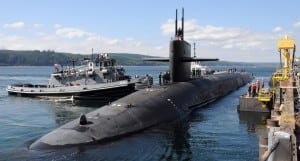
Slashing the size of the U.S. nuclear arsenal is one option to save billions of dollars in the coming decade for efforts to reduce the growing federal deficit, the Congressional Budget Office said Thursday. The CBO’s latest analysis of deficit-cutting opportunities covers the 2017 to 2026 fiscal years and encompasses 115 options to decrease spending or increase revenue across the breadth of the federal government, from Social Security to NASA to the Department of Defense. The options are not presented…













